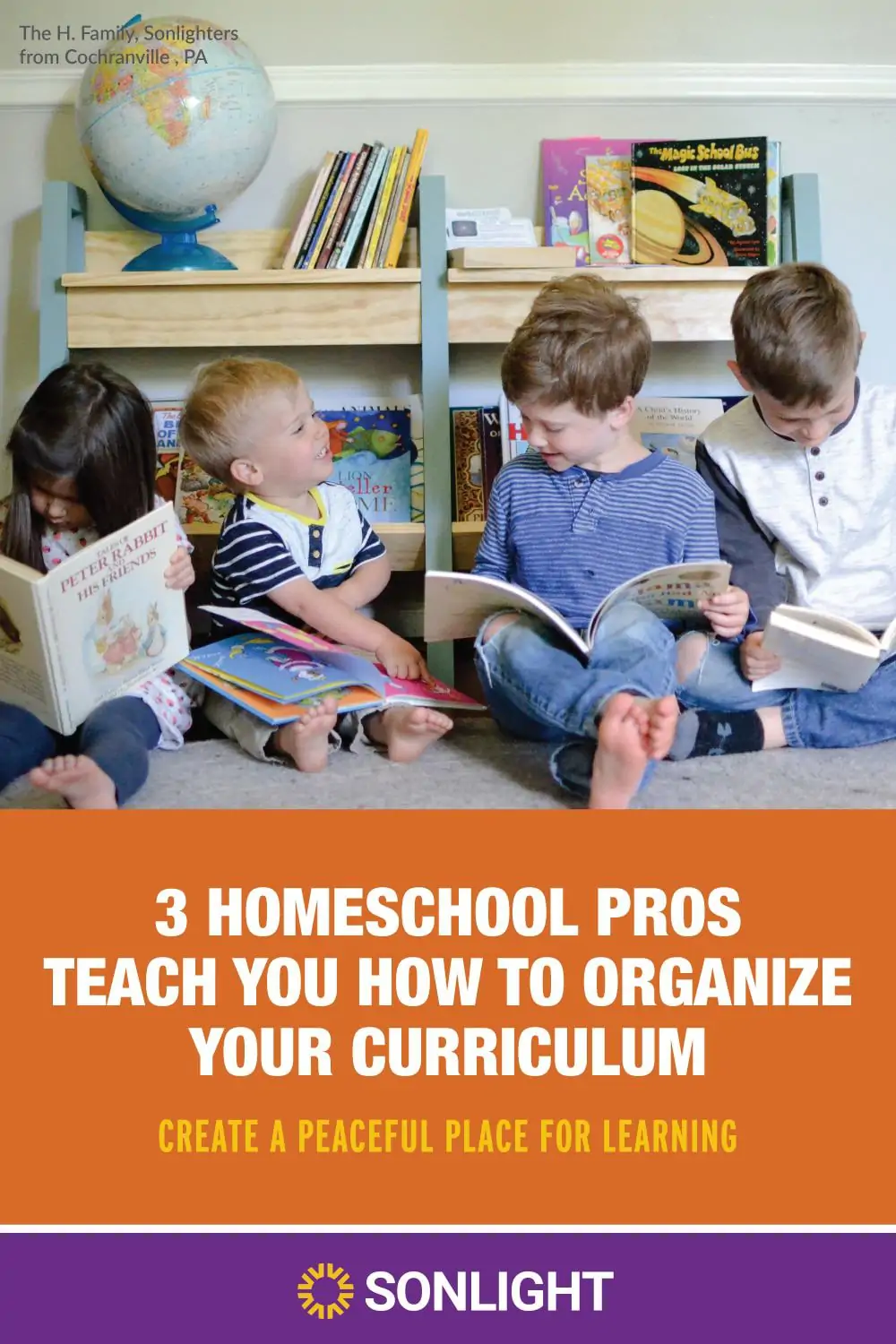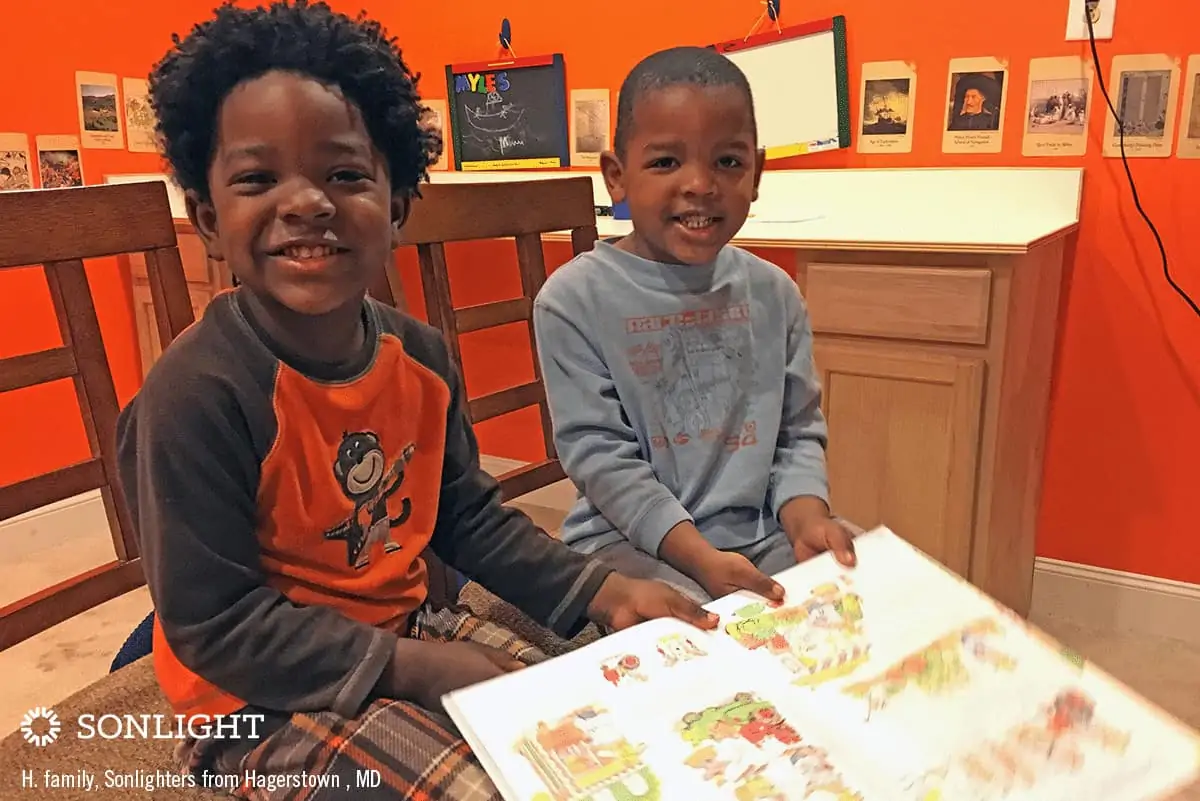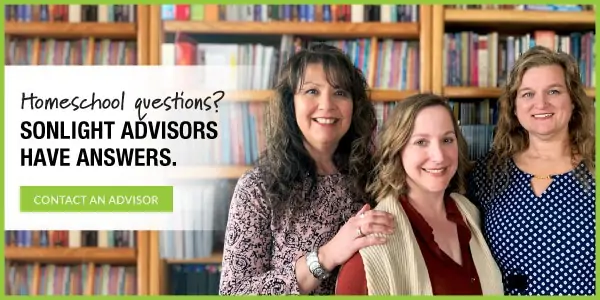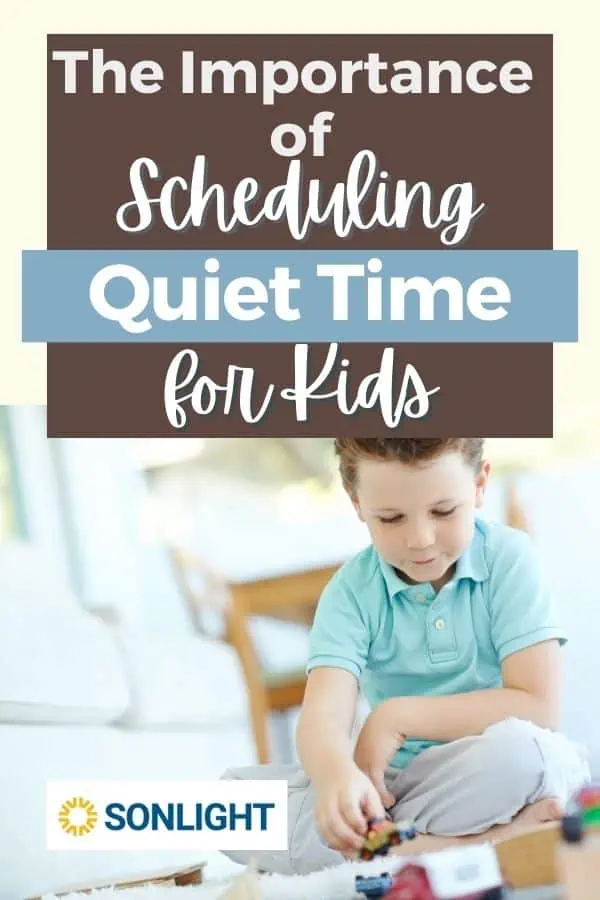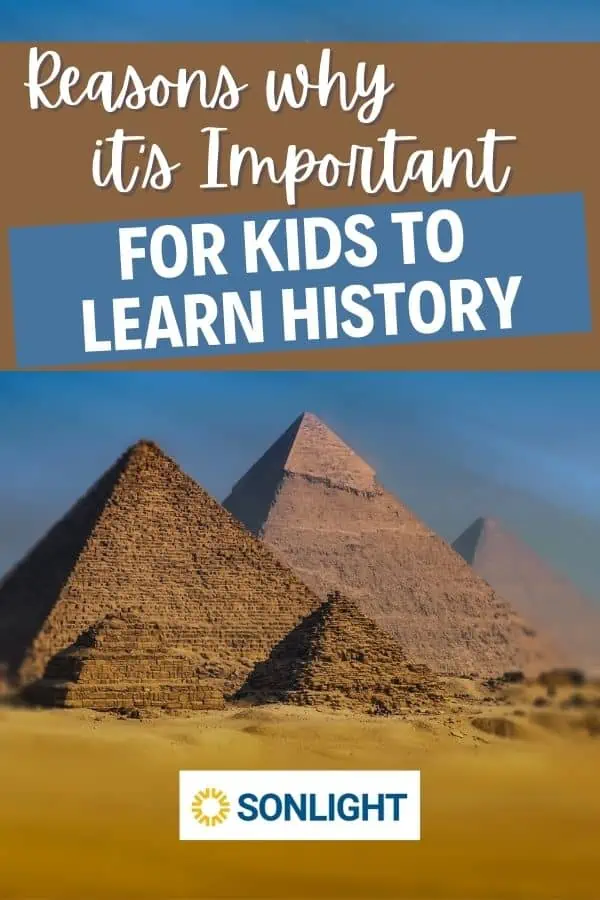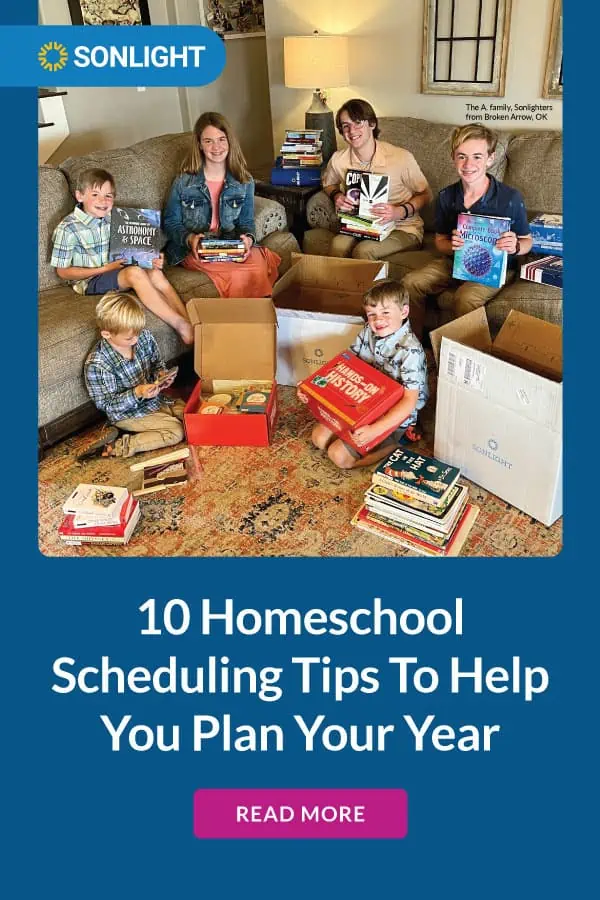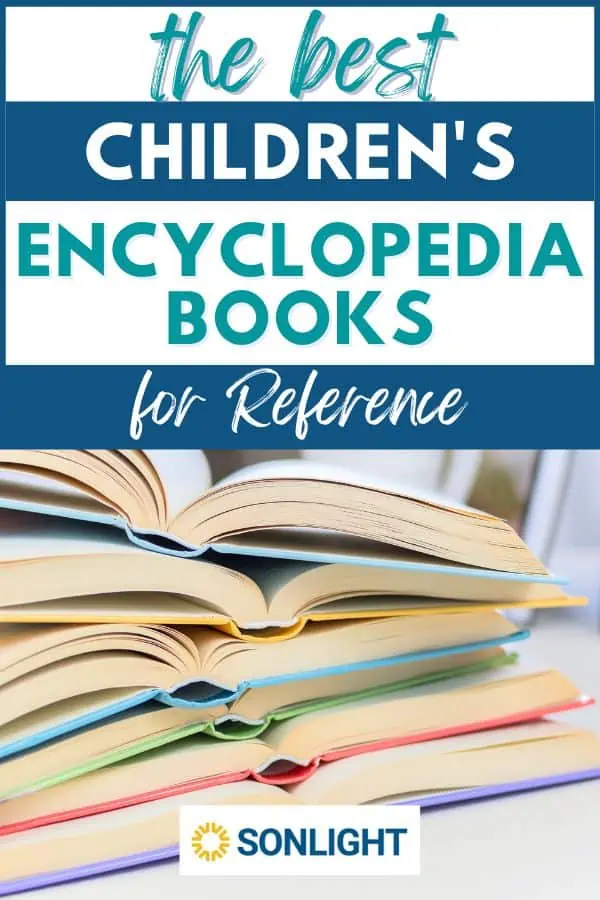3 Homeschool Pros Teach You How to Organize Your Curriculum
Published:
February 5, 2021

Contributor:
Sonlight
Disclosure: This post may contain affiliate links, meaning if you decide to make a purchase via my links, I may earn a commission at no additional cost to you. See my disclosure for more info.
A place for everything, and everything in its place. Yes, an orderly homeschool environment does matter. But how do you create such an atmosphere when using a literature-based approach to learning (or really any approach to learning)? There are books and school tools everywhere!
Whether you’re using a literature-based, classical, traditional, or unit study approach, this video + article offers practical tips for keeping track of your materials and creating a peaceful learning environment.
Stephanie (00:01):
Hello and welcome to Managing All the Books: A Practical Perspective for Organizing Your Homeschool Materials. Today, I have Rhonda, Sandy, and Sheila with me. We will be talking all about the details. Let me tell you a little bit about these ladies. They are all veteran homeschoolers. They all have graduated their children off into the world, some of them graduated from college and doing things in finance and sciences, and in liberal arts, some of them are still in college, but they all have very successful children. They all used Sonlight throughout their entire time homeschooling. Well, once they found it, I guess a few of them did sort of lead the way with some other things as they were finding Sonlight, but they love to share their passions about Sonlight.
Stephanie (00:59):
And sometimes, if you ever go to a convention, you will find these ladies because they’re our Sonlight curriculum consultants, and they visit conventions all over the country to talk about Sonlight. They love to share their passions about books, literature rich, and everything that comes along with a journey with Sonlight. Today, I am so excited to talk about this topic because with Sonlight, there’s a lot of books, right? And with homeschooling, there’s a lot of organization that goes into managing all of the stuff that you end up having. So let’s get started. Let’s start with, why does organization… Let me start that over. Why does an organized, restful environment matter? Sandy?
Sandy (01:48):
Well, you live and you do your schooling in the same place. You do it at home, and you’re usually there almost all day long. So it’s really important to have a restful environment. Homeschoolers do their schooling on the floor, on the couch, at the table. Some have a designated school room, but really you want to organize and it starts with choosing that place where you’re going to do your schooling. You want a comfortable place, you want something that’s inviting, something that fosters learning, but let’s be realistic, just talking about the materials, you have your Instructor’s Guide, you have your math books, your history books, your spelling books, your handwriting books, your math manipulatives. It goes on and on and on, you get the idea. So you can be overwhelmed with all the materials, and then it’s not so restful because everything’s just scattered everywhere.
Creating a Peaceful Place to Learn
Sandy (02:40):
I do have to say, I’ve never been accused of always having a non-cluttered home. I don’t always have it all together, and sometimes we have a difficult time. We have seasons in our lives where you’re lucky to get your hair brushed that day, or you have sick children, or you have a big event, or your washing machine breaks down. These are just things that now you have to think through your environment. This is not a condemnation at all. We just want to create a place that’s peaceful, that you can focus, a place for learning.
Stephanie (03:21):
That’s great. I need more of this advice. I’m looking forward to it, ladies. Let’s talk more. Let’s talk about the clutter. Why is it a problem? And do you have any tips on decluttering? Rhonda?
Rhonda (03:38):
I do. Yeah. Yes. Before we can talk about organizing and creating that restful home, we probably need to talk about the thing before the thing, which would be the things, and all the things. So what you need to do is, we do need to declutter probably first, before you can organize the things to create that restful home. So it’s a process. So I don’t know if you’ve ever done this, where you sit down at the end of the day and the home started out kind of okay, and then you just sit down at the end and you go, “How in the world… Where did all this come from?” And you’re completely overwhelmed at just the stuff. So probably if you’re overwhelmed, probably your kids are overwhelmed also.
Rhonda (04:21):
So here’s some things, there is research on this actually, and it shows in the journal of neuroscience, so they actually say that the impact of clutter, having a view of clutter in your eyesight and for you and for your children can actually cause the inability to focus, that’s one thing, and it even impacts toddlers, if you can imagine. And I understand that. I don’t know if you’ve ever tried to start a project and you’re like, “I can’t do it. There’s too much stuff around me.” And you have to clean first before you can work well, hello, that’s kind of the way it is for your children too.
Rhonda (05:02):
So the other thing is, is that clutter can also just raise your cortisol, the hormone that’s a stress one. And so that’s a great way to relieve stress in you and your children, is to get rid of the stuff. And the other thing that happens too with clutter is it could cause a loss of time because you’re like, “I know I have that. It’s here somewhere.” And you’re looking. Then on top of that, you’re like, “It’s here somewhere,” and you may overspend. So even clutter can turn into overspending, not good. Or there’s the, “Let me keep up with the neighbors because they have something really cool.” So you know the comparison trap? Yeah. That can happen too and make us have clutter. It’s things you don’t really need at all.
How to Declutter Your Home
Rhonda (05:46):
So you’re going to feel like, oh my goodness, this is so overwhelming, but no, here’s what you do, you just do one drawer or one shelf, one closet at a time. Don’t think about the others, just one at a time. And so you might be thinking, “Okay, so I don’t even know how to start there.” Here’s the cool thing, on the Sonlight website at Sonlight.com there is… And I’m going to read it to make sure that I get it right, it’s Conquer Your Clutter in Eight Easy Steps, if I were you print that off and have that by me, just as an encouragement and a guide to get started.
Rhonda (06:33):
So some things just quickly to walk through, you can ask yourself when you’re looking at things and you’re going through that shelf,
- Is this helpful?
- Do I actually use it?
- Have I used it in the last couple months?
If not, probably time to ditch it. How about, “Do I have a place for this?” Maybe it’s really cool, but it’s humongous. Well, how useful is it? Again, does it need to go? Think about too, would somebody else use it better or put better use of it? So that might be an idea to think about too. Another thing would be, for those of us who have done literature-based curriculum for Sonlight, for 300,000 years, and you get down to your youngest child and you love your books, you love your books, but you like, “How many books can I handle?”
Rhonda (07:23):
So what you may have to do, if all the children have gone through the year, is just get out all the books that you’re now done with, nobody else is going to study from, and let the kids pick a few good ones, create a little library shelf with that and donate the rest [inaudible 00:07:40] probably that. So after you spend some time decluttering, probably what you’ll want to do then is just routinely kind of look around and redo with the declutter. One trick that I use, and it’s quite helpful, is I make sure that if I get something new, I have to get rid of something. And I do this with school supplies, I do this with books and clothes too, actually. So those are some basic hints that I have for you in the declutter area.
How to Handle all the Books in a Literature-based Curriculum
Stephanie (08:17):
Awesome. Thank you. I need to do that more with my clothes as well. Anyway, when it comes to homeschool curriculum organization, do you have any advice coming up with a plan and a place for homeschool materials, Sheila?
Sheila (08:35):
Yes. So, as Sandy said, if you use a literature-based curriculum, you’re going to have a lot of books. So if you’re going to have a lot of books, guess what you’re going to need? You’re going to need bookshelves. So I recommend getting the tallest bookshelves that you can, that you can fit in your house, because you’re going maximize that vertical space and be able to store more materials.
Sheila (09:01):
And so once you have your bookshelves, then you need to organize each of your shelves. What I did through the years, as I purchased each additional year, I would keep my materials together. So if I started out with level A, then I would keep all the A materials, I would try to keep it all in one shelf, sometimes it would overflow into another shelf, but then I would also keep all my subjects together. So all the Bible materials together, history materials, read-alouds, readers, science, books, those kinds of things. And I would also label the books, label the spines. You can create a little PDF on your computer and print off little address size labels that you can put on your book spines. Sonlight also sells labels and they’re color coded, those are great as well.
Sheila (10:00):
So either way, it’s really handy to have what level it is, so A and then what category it falls under, history, science, whatever. That way, if your child pulls the books off the shelf, or if you wanted to use it with a younger child or something like that, you know what shelf it goes back on, you know where it’s place is, everything needs to have a place, so once you designate a place, you know where it goes. So have bookshelves, have your books labeled.
Keep Storage Shelves and Working Shelves
The other thing is put in a weekly investment time. I would do this on Sundays and I would gather up my materials that I was going to need for the following week so that I had it all in one place, I wasn’t having to everyday go hunt down the history spine or this science spine, or what the read aloud was or whatever.
Sheila (10:56):
And I would put those materials on a different shelf. So my one book case would have all my levels, A, B, C, etc. And then I had a different place and I would call that my working shelf, because I was working with those materials on that particular shelf, so that wasn’t my storage area, that was the area that I was working with, and that’s where I would keep those materials. On Sundays then, I would look at the next week’s Instructor’s Guide pages and see if we had completed a read aloud, or if a child had completed a reader, then I would gather up at the books that we were finished with and put them back into the storage shelf and then pull the next reader, read aloud, whatever, off the shelf and it would go on the working shelf. That just simplified things, streamlined things. I wasn’t having to dig through a whole pile of books, I had my working shelf.
Sheila (11:52):
So that’s how I would organize my week. The other thing that I would do is you get a big binder and that binder holds all of your Instructor’s Guides, as well as your child’s activity sheets if you put them all in one place. We have tabs separated 36 weeks, and so instead of carrying this three inch, four inch, I don’t know, it’s a big binder, instead of carrying this big binder around with me, it’s a little bit unwieldy and kind of heavy, I would pull out the week that I was on, say I was on week four, pull out all the pages for week four and put it in a small half inch binder. And that was my working binder because I was working out of that binder.
Sheila (12:37):
And that way I had everything I needed, all my Instructor’s Guide pages, my Activity Sheets for the kids that I could pass out, all in one place. And it was small. It was manageable. Then on Sunday I would go through, make sure we had completed everything, if I didn’t, it stayed in the working binder, but I would pull out the next week sheets and put it behind it so that I can keep going and not fall behind. And then when I finished with those Instructor’s Guide pages, they would go back into the big binder, which would go back on the shelf. So again, just having a place for everything, including your materials is key.
Teaching Kids to Keep the Homeschool Organized
Stephanie (13:16):
Awesome. So what about the kids? How do you keep them organized, get them organized, keep them organized?
Sheila (13:23):
Yeah. So the kids, if they had books that they could keep on the working shelf, like the reader and stuff, then we would do that. But they also had their own folder so that when I gave them an activity sheet, whether it was a language arts activity sheets, or a science activity sheet, they had a place to keep that piece of paper, it didn’t get lost in the house. So it would go in their folder, and again, at the end of the week, when they had completed that sheet, they would turn it in, they would give it to me. And then I have a system of how I would manage that, and I’ll talk about that in a minute.
Sheila (13:58):
One year, I actually converted a chest of drawers, it had five drawers, and I had a drawer, each of my three kids had a drawer, and then the top drawer was desk supplies, that’s where I would keep the protractor and the compass, and the ruler, and the manipulatives, and flashcards and all those kinds of little things, they would go in that particular drawer. And even the toddler, that was the year that I had a toddler and she had her own drawer with her own puzzles and things that she could only use during school time. So she also had a school drawer. And the kids had their drawers that they could keep things in. At the beginning of the year, we always go school shopping.
Sheila (14:44):
So the kids got brand new materials if they needed it, if they lost their scissors or their glue stick had dried up or whatever, it’s always good to get new pencils and crayons and things like that. And so each child had their own pencil box, the big kind, the kind that would hold more than just pencils, they could keep their scissors in there and we’d labeled them and they got to pick out the color that they wanted, and then that pencil box went into that drawer. So when the kids turn their papers in to me, what I do is I have a system of hanging files, I had a little box that had each child’s hanging file folders, separated by subject, so the science activity sheets, the language arts activity sheets, and then papers that they might write, any other additional crafty kind of things that I wanted to document, and I would put them in those file folders.
How to Curate and Store School Work Mementos
Sheila (15:42):
Then at the end of the year, sometimes when I was really organized, I would do it quarterly, but usually at Christmas time, and at the halfway point, and then at the end of the year, I would dig through, pull out the really good samples of their work, save those, and we could toss the rest. And then those went into a notebook that I also had divided by tabs that had what the subject was. And that was just the way I documented what their work was for the year. If the school board ever came knocking, I had something that I could show them, besides the Instructor’s Guide that had a list of all the books that we read and all that, but the actual written stuff.
Sheila (16:20):
And you don’t have to save every single piece of paper that they write on, trust me, that would be a lot. So in my state, the law says that you just need to save a sampling. You need to be sure of what your state says, but for my state, we just needed a sampling, so I did about every six weeks, so I would save a piece of paper about every six weeks so that it was a manageable amount at the end, but it was representative of what they had done.
Stephanie (16:51):
That’s great advice. Great.
Sheila (16:54):
Thanks.
Organization is the Entire Family’s Role
Stephanie (16:54):
How do you get your family involved in creating a restful home and homeschool environment?
Sandy (17:02):
Well, the main thing here is don’t feel that it is only mom’s job to do everything. This is a family affair. This is something that it’s really important that every member of the household is a part of. To create that lifelong organizational habit in your children, there are a few ideas and some of the quick ones would be to have a post-subject pickup. Now, after you’ve finished your subject for the day, clean it up. You might put it back in that drawer that Sheila was talking about, you might have a basket for each child, whatever it is you have, they pick up their materials and then they’re ready for the next day. You might assign a cruise through the house task for each child, maybe, “Can you put these bath towels away for me?” Just things that they can help, we’re not talking about hours here.
Sandy (17:55):
And then every student can collect their materials, like we said, get them out of the way after you’ve finished your whole day. Teach them to help in the kitchen after you have finished a meal. When I was younger, my sister and I would do the dishes and we would never wipe the counters, and my mother would say, “That’s part of cleaning the kitchen.” And it’s important that mom models these things first, but the kids, as they get older, they can take over that and really help with that cleanup. And the same with laundry. Now, laundry is one of those things where moms either want to do it all themselves, or they want their children to learn, and either way, I think the basics of laundry can be taught to every child. And that would be your sorting, and that would be your folding and putting away. And then if you want to teach them how to do the laundry itself, great.
Plan for Regular Decluttering Sessions
Sandy (18:47):
Along the way, I would schedule decluttering times, this might be during Christmas break, it might be right before school starts, go through the kids’ rooms, go through your game closets, go through your school materials. And if you’re going through the kids’ rooms, for instance, go through their clothes, go through their toys and things, throw out what’s broken, give away what they don’t love anymore, or the clothes, the same thing, or if you need to pack clothes for the next child, do that. But declutter through there. I think what’s important is if you do this periodic keeping up with things, it’s not going to get out of hand, that’s the main thing. If you invest, what you invest in, you will reap that calm, peaceful home, but the main thing to remember is it’s a team effort.
Stephanie (19:42):
For sure. For sure. Any last minute organization advice or tips?
Rhonda (19:50):
Well, I don’t know if it’s new tips or anything earth shattering, but I will say this, Sheila’s had some great ideas about organizing specifically school supplies, Sandy’s had so much good encouragement for the whole household and everything, but what you want to remember, the reason why you’re doing all this organizing and decluttering, oh right, it’s for those babies, it’s for your children. And so I would encourage you, don’t stress about the organization and things like that, be creative. Did you hear Sheila? She used a dresser. Okay? You don’t need something new and fancy, look around your house, you’ve got something that can help you. And like I said, remember, just take one little piece at a time and you’ll get there. And I just want to encourage that, and to remember in the end that yes, all this decluttering, it’ll make it easier for you, it’ll make a nicer house, just more fun for everybody if everything’s a little bit organized and decluttered and you kind of keep it that way.
Rhonda (21:01):
But most of all, it’s a heart thing, guys. It’s a thing of remembering we can get all screwy about all that cleaning stuff, but in the end, it’s about you are breathing life into those children that God has blessed you with, and that’s the important piece, is breathing life into them, bringing His truth, His knowledge, His grace, and extend that to yourself and extend it to your babies in an organized manner.
Stephanie (21:34):
Well, thank you so much, ladies. There’s a place for everything and everything has a place. So thank you for walking us through all this.
Rhonda (21:43):
Sure.
Sheila (21:44):
My pleasure.
Sandy (21:44):
Yep.

